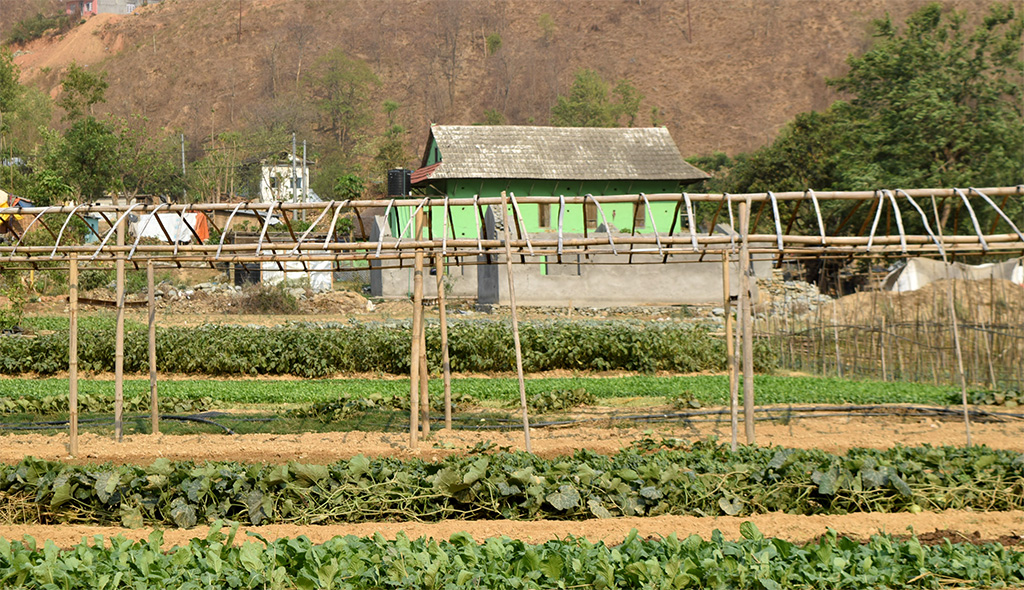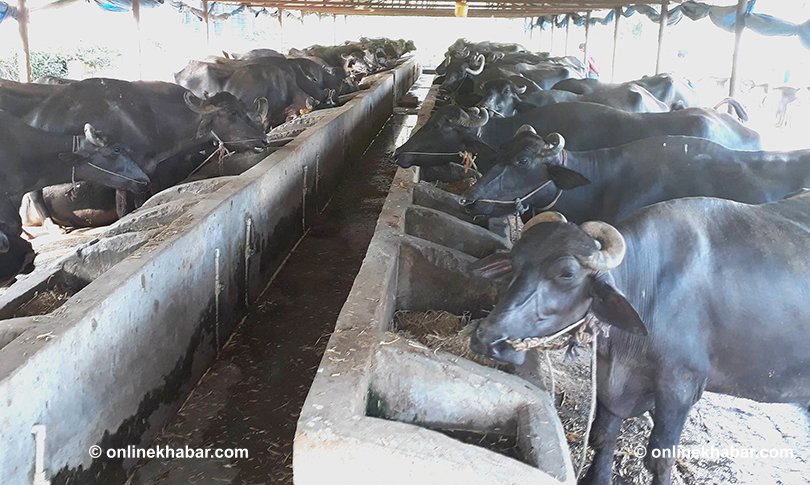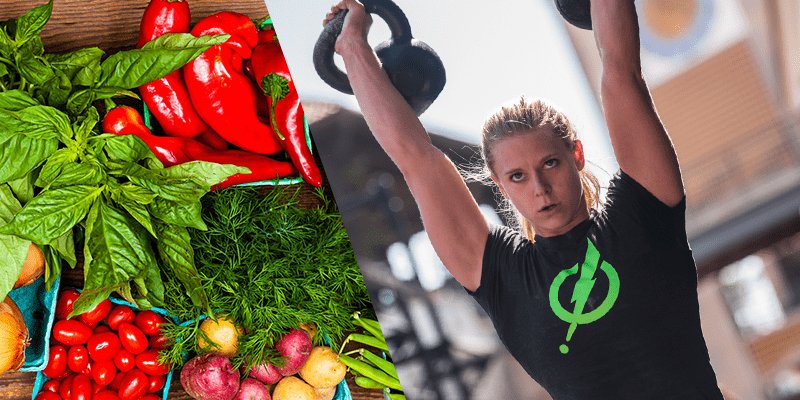1. Focus on getting enough sleep.
If you’re going to prioritize one traditional self-care strategy right now, please try to get some sleep. It may seem like a small thing, but it impacts so much. “The less sleep we get, the more hypersensitive to threat we are,” says Bonior. “We get more anxious. We view things more negatively. It’s all an evolutionary response. Back in cave-dwelling times, if you were sluggish and tired, you got eaten unless you were on your guard. If you’re not getting enough sleep, your body will view everything as a threat to protect you.”
Of course, there’s a good chance the stress and anxiety of everything are interrupting your sleep right now, so prioritizing sleep isn’t exactly easy. But it’s worth putting in extra effort to make sure your sleep is as protected as possible, whether that’s through adjusting your screen time, doubling down on pre-bed relaxation exercises, or talking to your doctor about other steps you can take. Start with these tips on getting sleep despite pandemic anxiety.
2. Don’t beat yourself up about how you “should” and “shouldn’t” feel.
There’s a lot of talk about how we should be adjusted to the “new normal” of living amid a pandemic, and for many that just adds guilt and invalidates how we’re feeling. Like, what does getting used to something really mean, anyway? “It’s like permanently having a rock in your shoe,” says Bonior. “Sure, you might get used to it being there, but that doesn’t mean it doesn’t still hurt every time you walk.” So cut yourself some slack if you find yourself thinking, Why do I still feel so bad? Shouldn’t I have it under control by now?
More than that, if you find yourself reacting to things in a way you wouldn’t “normally,” remind yourself that things aren’t normal right now! Sure, maybe in the past you wouldn’t have responded as poorly to, say, getting in a small argument with your partner or receiving poor feedback from your boss, but hypersensitivity is an understandable result of everything going on too. “There are many things we would’ve been able to deal with just fine at our normal baseline functioning,” says Bonior. “Now we’re at a disadvantage because our reserves depleted and don’t have anything more to give. Even a bit of bad news we’d normally handle can feel like a crisis-level threat.”
3. Interrupt your catastrophic thinking.
Catastrophic thinking is typically defined by therapists as ruminating on worst-case scenarios. Think worrying that your plane will crash or that a small symptom you’re dealing with is a sign of a terminal illness. The thing is, though, during these turbulent times, catastrophic thinking hits way closer to home. Like, we’re living through a plague! Some catastrophic thinking doesn’t feel so catastrophic anymore!
Since a lot of common tools to battle catastrophic thoughts might not be as helpful right now (like fact-checking a thought and exploring worst-case scenarios head-on), Caraballo recommends trying to avoid going down the rabbit hole at all. “Find anything that can interrupt your thinking,” he says. “Notice when your thoughts start to snowball and say, ‘Okay, I’m spiraling, time to redirect myself to a game on my phone or a conversation with a friend.’”
4. Take things one day at a time.
Speaking of catastrophic thinking, it might be in your best interest to focus more on the present than the future right now. Which, easier said than done, I know. But with so much uncertainty about what the future will look like, trying to imagine it is a recipe for spinning out.
“For example, take thinking about the election—obviously a lot of us have all this anxiety about what’s going to happen,” says Caraballo. “Trump’s been throwing around comments about negotiating for a third term, and you hear him say that and start to think, Oh, God, I’m going to die if this person is president for a third term. America will never recover. All of these awful things will happen. That’s where our brains go. Sometimes the best you can do is bring yourself back to what you actually know today and what you can do today.” Maybe that’s cementing your voting plan or volunteering to work the polls.
Same goes for anything else you’re spiraling out about. If you find yourself worrying about how getting laid off will impact your career trajectory, bring yourself back to what job you can apply for today or updating your resume. If you’re worrying about your kid’s future, interrupt yourself and focus on helping them with their homework or getting in some bonding time.
All that said, taking things one day at a time doesn’t have to be about taking action—maybe today all you focus on is getting through the best you can. Speaking of…
5. Remember denial and distraction are okay tools sometimes.
Look, some days you just need to turn off the news and pretend everything is okay. There’s often a lot of guilt around distracting yourself from the many horrors of the world, because it can feel like being disengaged is being complicit. But now is the time to use all the coping tools in your toolbox—including things like denial, distraction, a dark sense of humor, or other defense mechanisms you might normally worry your therapist would frown upon
“Denial is a defense mechanism for a reason,” says Caraballo. “You just have to watch that you don’t use it at the exclusion of other tools.” As long as you don’t ignore what’s going on to the point of delusion or ignorance—and as long as you practice self-care in other ways too—you can give yourself permission to turn your brain off sometimes. (That said, make sure to turn it back on when it matters. Here are some things to keep in mind when navigating tuning out as “self-care” as a white person, for example. You want to be strategic, and you have to tune back in eventually.)
6. But also give yourself space to process what’s going on.
That said, numbing out your feelings completely will backfire too, which is why balance is so important. “Obviously we like to avoid negative feelings—it’s self-preservation on some level—but it’s important not to let things just roll by,” says Caraballo. “When you brush something off and say, ‘Ah, yes, of course this is happening, that’s 2020 for you,’ those feelings just get stored internally. Eventually, when your defenses are down, those feelings will be like, ‘Hello, here we are. All those things you haven’t dealt with, all at once.’”
If you don’t know where to start feeling your feelings without getting completely overwhelmed, these tips on emotional regulation might be a good starting point. Also, never underestimate the power of a good cry.
7. Really go out of your way to notice good things.
You might know rationally there are still bright spots in the world, but that doesn’t make it easy to see them. We’re just not primed for it right now, a result of yet another evolutionary response. “Our brains are trained to be on the alert for threats,” says Bonior. “So we’re hypervigilant to the bad things right now, and it’s harder to notice the little rays of light when everything seems to be on fire.”
Because of this, it can be helpful to make an active effort to balance out everything you’re going through with moments of levity. Start a gratitude practice, go out of your way to watch funny shows or movies, swap good memories with old friends—anything to make sure you’re not spending all of your time focused on how much is going wrong.
8. For the love of God, change your social media habits.
As someone who knows that doomscrolling is awful for my mental health, I also know that it can feel near impossible to look away from the train wreck that is Twitter or Facebook. We’re in a tough spot these days—social media is a beacon of awful news and discourse, but it’s also a necessary mode of connection in a time of social distancing. It’s not exactly easy to delete the apps and never look back.
That said, mental health professionals continue to advocate for adjusting your social media habits. It’s common among mental health tips for a reason. If you can’t commit to using social media less, Caraballo suggests at least using it differently. Maybe you can spend more time on TikTok instead of Twitter, since it tends to make you laugh more. Or maybe you want to create a list or second account where you only follow meme accounts. Maybe you can make a habit out of leaving positive comments on posts from artists you follow or on your friends’ selfies. “You can find small ways to cut through some of the negative stuff that comes with online culture,” says Caraballo.
9. Carve out one moment a day where things can’t go wrong.
I don’t know about you, but I’ve reached a point where it feels like something bad is waiting around every corner, and I’m constantly bracing myself for the next bad news alert or email or text or personal disappointment. Given everything, this feels like a reasonable state of mind to be in—but that doesn’t mean we can’t create spaces that are protected from these feelings, no matter how small. Bonior suggests making a daily goal out of it.
“It can be as little as five minutes a day,” says Bonior. “Even if you feel everything’s getting out of control and going wrong, you can carve out five minutes a day where nothing can get worse. Five minutes where you don’t look at your phone, where you won’t see catastrophes. Five minutes where you’re not going to do anything but lie in bed listening to music you love.” Or play with your pet or children. Or try a guided meditation. Or whatever that looks like for you.
It might sound small, but in a time when everything keeps piling up, small moments of reprieve can add up too.










